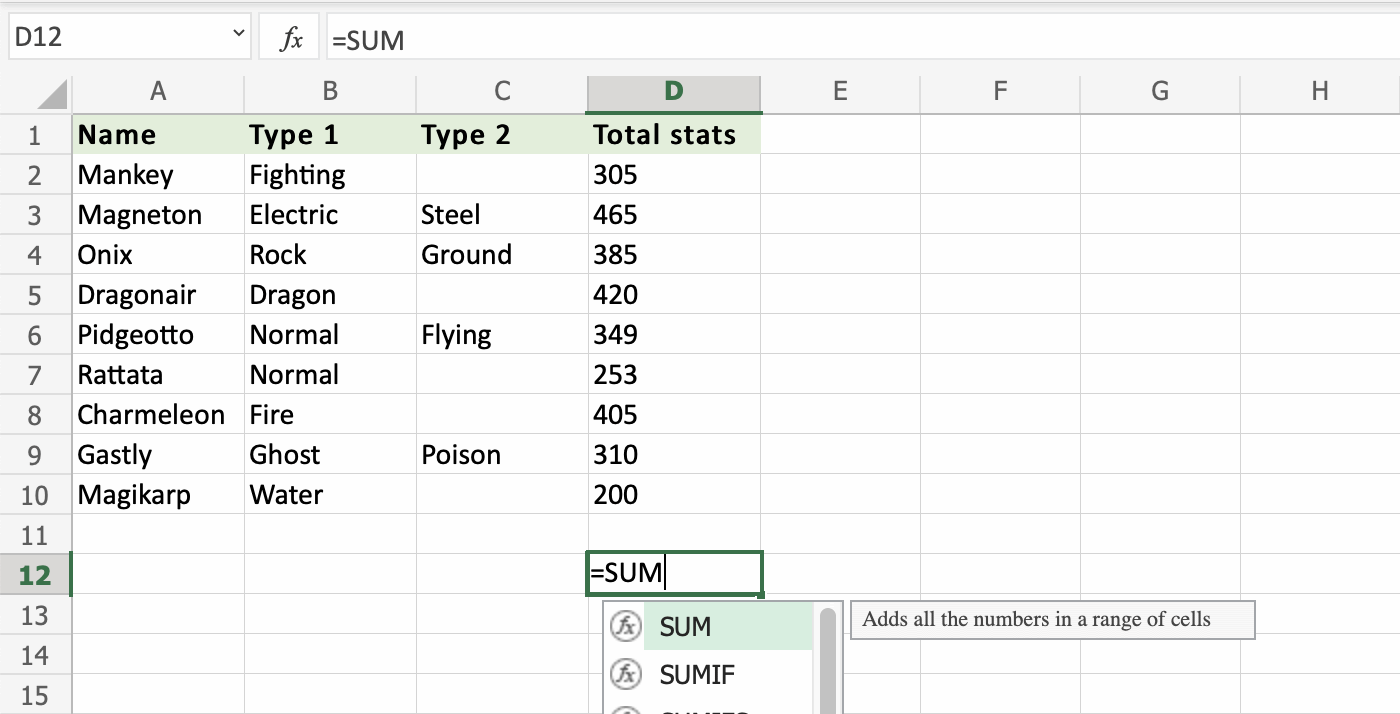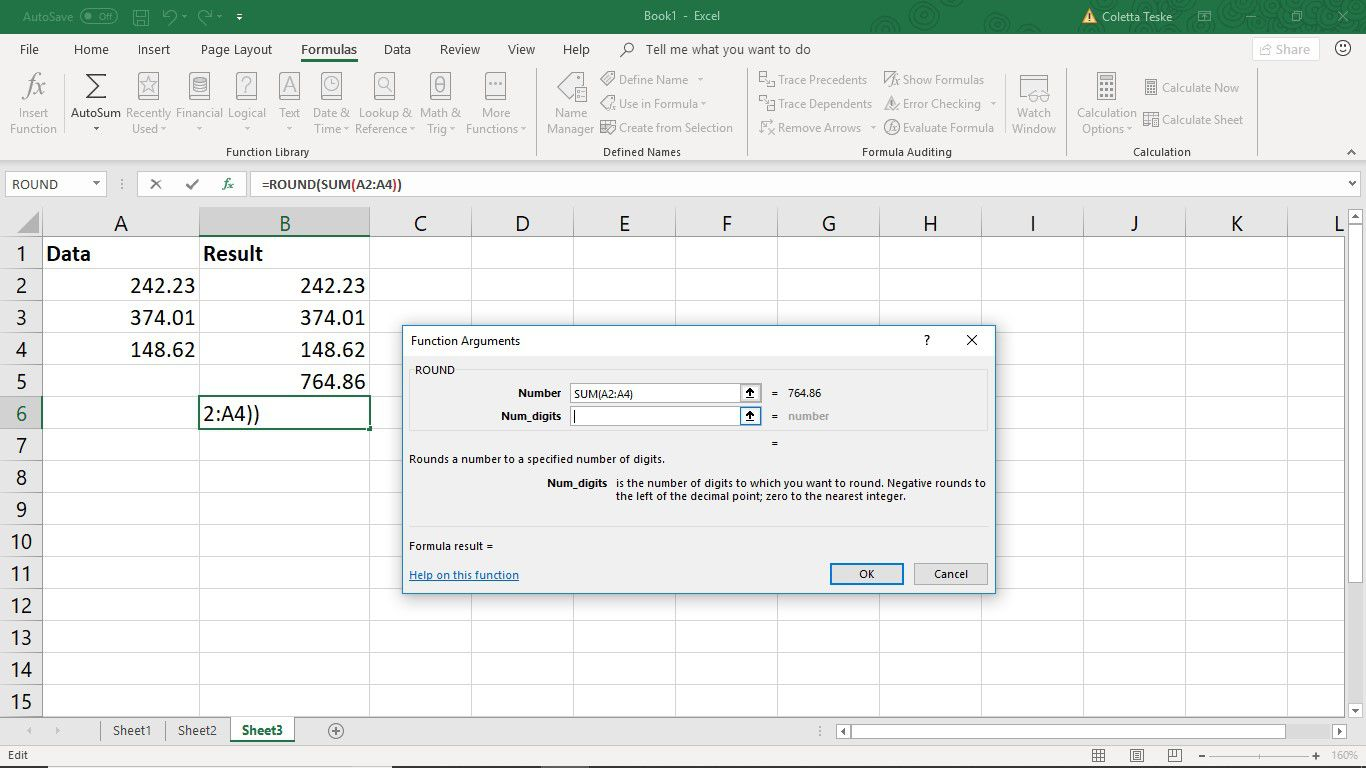Working professionals
Fresh graduates
- Study abroad
- Offline centres
More
27. Columns in Excel
33. Count In Excel
49. Slicers in Excel
54. Solver in Excel
56. Macros In Excel
Excel Sum Formula
‘Sum’ is a nifty formula widely used in spreadsheet applications to quickly calculate the total of a range of numbers or cells. Whether you calculate analytical or financial data, the Excel Sum function simplifies complex information into useful information.
As an experienced Excel user, I have used the SUM formula extensively for financial analysis, project management, and data visualization. Hence, I have brought to you this comprehensive guide to make it easier for you to learn and apply. This will further help you effortlessly gather statistics, analyze trends, and draw insightful conclusions.
You can further explore real-life examples and master the Excel sum formula by taking up free Excel courses.
Excel Sum Formula: What Is It Used For?
AutoSum in Excel, also known as total formula in Excel, is really important in a myriad of number-focused work done in Excel. The main purpose of the is super simple—it adds up numbers. Whether you want to add up a range of cells, or just a couple of individual values, it's got you covered.
The way it works is also quite simple. You just add the required numbers, separated by commas. This simple structure is what makes complex number-crunching possible, and helps make sense of large amounts of data. It is especially useful for professionals like finance officers, accountants, data analysts, and project managers.

Source- W3 Schools
How to Calculate Total in Excel Formula
The SUM function is ideal for Excel beginners who want to learn how to perform basic calculations in Excel. It efficiently adds values and returns the total, making it crucial for various financial, accounting, and data analysis tasks.

Source: Lifewire
The formula for SUM follows a clear structure:
=SUM (number1, [number2], ...)
Syntax Breakdown:
- =: Initiates the formula, indicating that the cell will display a calculated value.
- SUM: The function keyword that instructs Excel to perform the addition operation.
- ( ): Encloses the arguments (inputs) provided to the function.
- number1: The first numeric value or cell reference to be included in the summation. This can be a direct number (e.g., 5), a cell address (e.g., B3), or a range of cells (e.g., A1:A10).
- [number2], ...: Optional arguments representing additional numbers or cell references to be added. You can include as many arguments as needed, separated by commas.
Illustrative Excel sum formula examples:
- Adding individual values: To calculate the sum of 25 and 30, you can use the formula: =SUM(25, 30) which returns 55.
- Summing a cell range: If your sales figures are present in cells B2 to B10, the formula =SUM(B2:B10) will add all the values within that range.
- Combining cell references and values: You can mix individual numbers and cell references within the function. For instance, =SUM(50, A1:A5) calculates the sum of 50 and the values in cells A1 to A5.
- While the core functionality involves adding numbers, the SUM function offers versatility.
- Empty cells and text: The SUM function ignores empty cells and text values within the specified range.
- Logical values (TRUE/FALSE): TRUE is treated as 1 and FALSE as 0 during summation.
Practical Examples and Use Cases
Investing your time in mastering Excel formulas can make common data-related tasks more efficient. It also equips people with useful skills to manage data in numerous professional situations. Here are some practical use cases of the the Excel sum formula:
1. Summing a Range of Cells
Imagine you've got your monthly team sales numbers in boxes A1 to A12 in Excel. How do you add them all up for the year? It's simple! All you need ro do is run this formula; =SUM(A1:A12). This command quickly tallies up all the values in the chosen boxes.
2. Summing Non-Adjacent Ranges
Using the Excel Sum formula, you can add different sections of data not next to each other, like sales data for various regions. Do this by using the formula =SUM(A1:A10, C1:C10) for adding up all regional sales.
3. Summing Cells Based on Criteria
You can merge the Excel Sum formula with other functions such as SUMIF and SUMIFS to sum totals based on particular criteria. Specifically, use the formula
=SUMIF(range, criteria, sum_range)
to calculate the total sales of distinct product categories.
4. Automating Totals with the AutoSum Feature
Excel's AutoSum feature allows for quick sum operation. Just choose the cell for your total, tap the AutoSum button (Σ) on the Home tab, or use Alt + = keys, and Excel will show the appropriate sum-range based on neighboring data.
Advanced Techniques and Shortcuts
1. Keyboard Shortcut for Sum
Yes, AutoSum is handy. But, there is a better method to give you that sum formula. And it's all about your keyboard! To execute the Excel shortcut key’s sum function, all you need to do is hit Alt + = to instantly insert the sum formula and automatically select the range based on the adjacent data.
2. Sum Across Multiple Worksheets
This is quite a nifty Excel feature. You can add up values from different worksheets, all in the same workbook. Just use this formula -
=SUM(Sheet1:Sheet3!A1)
This sums up the A1 cell values from Sheet1, Sheet2, and Sheet3.
3. Sum with Criteria Using SUMIFS
Think of the SUMIFS function as a more advanced sum formula. It gives you the ability to add numbers according to more than one requirement. For instance,\
=SUMIFS(sum_range, criteria_range1, criteria1, criteria_range2, criteria2)
lets you to add up figures in 'sum_range.'
But there's a catch. The corresponding cells in 'criteria_range1' should align with 'criteria1.' And the cells in 'criteria_range2' should align with 'criteria2.' Only then does the summing up happen.
4. Sum with Conditional Formatting
Mix the adding equation with condition-based formatting to spotlight certain areas or sums. This works on fixed rules. This method is especially handy for pointing out patterns or odd data.
Wrapping Up: Excel Sum Formula
Bottom line, mastering the details of the Excel sum formula is important. It's a core part of managing and analyzing data in well-known software. You'll get it once you know not just the basics but also extra tools like the AutoSumfeature.
That's how users can work quicker and get totals faster. Plus, being able to create custom formulas gives users the control and flexibility they need to make decisions and solve problems.
Explore advanced Excel courses and master your data analysis skills with upGrad! Whether you're a beginner or an experienced user, upGrad offers comprehensive courses to enhance your Excel proficiency. Dive deeper into your data analysis journey with upGrad here.
Frequently Asked Questions
1. What is the formula for the sum of rows in Excel?
Excel total rows and columns formula is one of the most widely used Sum formulas. In Excel, you add up a row by using the Excel sum formula; =SUM(first_cell:last_cell). So, if you're totaling the values from cells A1 through E1, you would input =SUM(A1:E1).
2. How do I sum text in Excel?
Excel treats text values as zeros when performing calculations. To sum text values, you'll need to convert them to numbers first, using functions like VALUE or NUMBERVALUE.
3. What is the formula for AutoSum in Excel?
The AutoSum feature in Excel inserts the =SUM() formula automatically based on the selected range or adjacent data.
4. How do you add cells in Excel?
You can add cells in Excel using the =SUM() formula. Specify the individual cell references or a range of cells within the parentheses, separated by commas or colons.
5. How do I sum a column in numbers?
Here's a simple way to add up a column using the Excel total column formula. First, click on the cell where you want your total. Next, push the AutoSum button (it looks like this: Σ) or hit Alt + = on your keyboard. Excel's got your back - it'll add everything up from the column for you.
6. How do I add numbers to 1, 2, 3 in Excel?
Using Excel, you can insert sequential numbers (like 1, 2, 3, and so on) with the =SUM(first_number:last_number) = SUM ( first_number : last_number ) formula. Let's say we use =SUM(1:10), what happens? It will total the numbers from 1 up to 10. formula. Let's say we use =SUM(1:10 ), what happens? It will total the numbers from 1 up to 10.
7. What is the shortcut for sum in Excel?
The Excel sum formula shortcut is Alt + =. This will automatically insert the =SUM() formula and suggest the range based on the adjacent data.
8. How do I do a sum formula in Excel?
To create a Excel sum formula, start by typing =SUM(, then specify the values or cell references you want to add, separated by commas or colons for ranges, and close the parentheses). Hit Enter to calculate the total.
9. How do you sum cells quickly in Excel?
For adding up cells fast in Excel, the AutoSum tool is your friend. Pick the cell for your total, hit the AutoSum button (Σ) or Alt + =, and Excel will suggest a range to add from data nearby.

Author|15 articles published


upGrad Learner Support
Talk to our experts. We are available 7 days a week, 10 AM to 7 PM
Indian Nationals
Foreign Nationals
Disclaimer
The above statistics depend on various factors and individual results may vary. Past performance is no guarantee of future results.
The student assumes full responsibility for all expenses associated with visas, travel, & related costs. upGrad does not .























-ae8d039bbd2a41318308f8d26b52ac8f.svg)
-35c169da468a4cc481c6a8505a74826d.webp&w=128&q=75)
-7f4b4f34e09d42bfa73b58f4a230cffa.webp&w=128&q=75)



